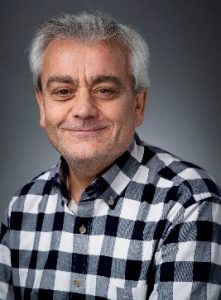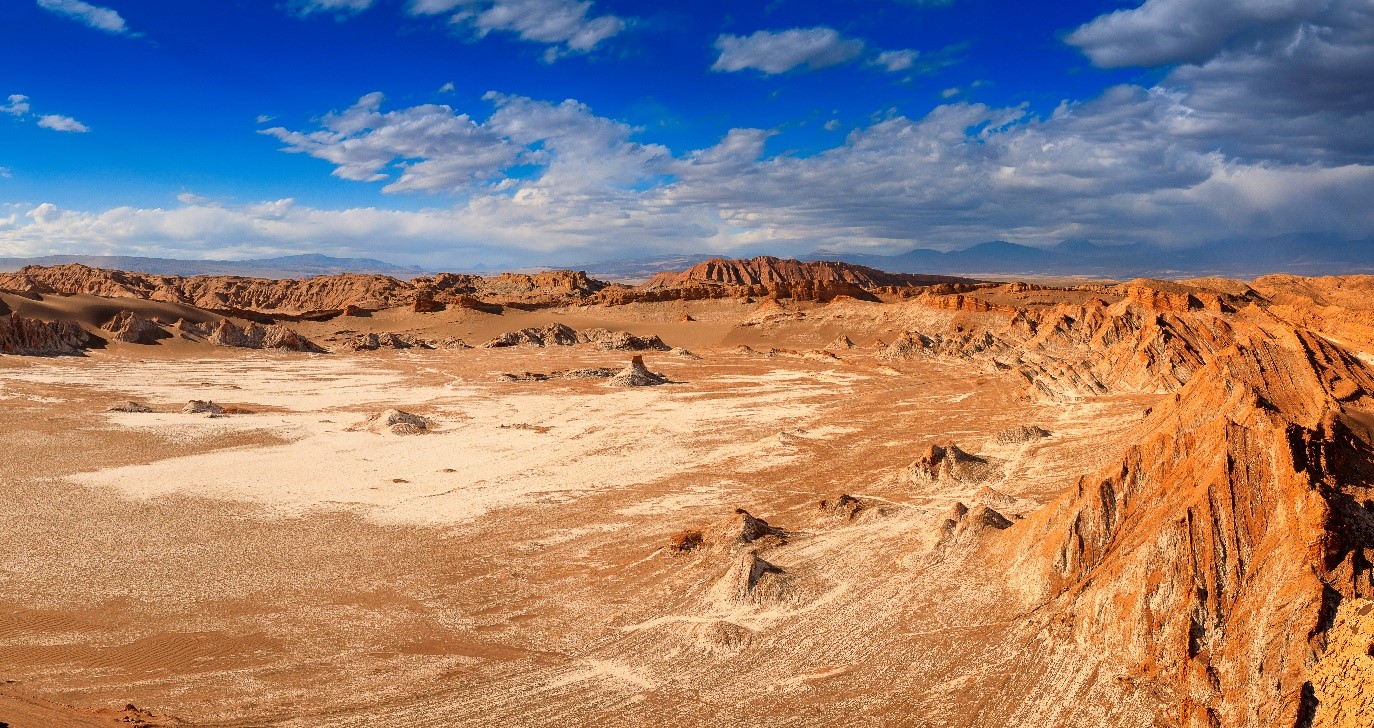Adán Cubillo Hurtado | 21/04/2022
The geological characteristics of the Latin American region provide the territory with extraordinary geothermal potential that has, however, not yet been exploited in most of the region. While the implementation costs fuels this development reluctance, we are talking about a green and permanent source that could ensure energy self-supply and strengthen decarbonization projects. Diego Morata, director of the Geothermal Center of Excellence in The Andes (Centro de Excelencia en Geotermia de Los Andes, CEGA), talks about the proven success stories and challenges the industry faces.
The geological context of Latin America, very marked by the Andes Mountain Range, gives the region a characteristic geothermal anomaly, with an extraordinarily high gradient. “These conditions range from Mexico to southern Chile and Argentina, and make it a very favorable area to find geothermal resources,” explains Diego Morata, director of CEGA. However, if we frame this energy model together, it’s accurate to talk about potential, geothermal has ceased to be a promise to become an unquestionable reality in some countries. “Mexico, for example, has exceeded 1,000 MW installed, and is the 4th power in the world. It stopped being promising more than half a century ago,” Morata says.
The current international context, and in which energy independence could become a determining factor in economic development, the Mexican case is a reference point for the other models that still host geothermal exploitation in its initial stage. “Andean countries in general have a spectacular energy resource under their feet, and this could be a security for the region,” the expert said.
In the case of Chile, it was also committed to a very powerful decarbonization plan for 2050, when thousands of megawatts dependent on fossil fuels will have to be seized and replaced, mostly from foreign markets. “Being able to promote a technical component for electricity generation provides security to the matrices of these countries, which would be at least partly independent from the international political situation. If this also helps decarbonization, geothermal as a direct energy source should be a priority for Latin American governments.”
Current Scenario and Industry Challenges
In the analysis of the geothermal energy situation in Central America, and aside from the exceptional development of Mexico, we find modest representation in some countries (such as Guatemala –52 MW– and Honduras –35 MW–), but important in others (such as Costa Rica –260 MW–, El Salvador –204 MW– and Nicaragua –107 MW–). “And then we move on to South America, where the Andes Mountains are mostly located and where for many years it was said to be the great power to exploit. There have been many development promises in recent decades in Peru, Bolivia, Colombia, Ecuador, Argentina, Chile, etc. But the reality is that it’s been hard for it to take hold. The first country to explore geothermal was Chile, which finally opened a 48 MW plant in 2019, with an expansion that would add more capacity this year,” says the expert.
One of the main obstacles that have prevented further strengthening of geothermal in the region has been the implementation costs, although the director of the CEGA ensures that this handicap should be taken with perspective. “Geothermal is possibly more expensive to implement than solar, but the advantage of geothermal is that it provides stability. It is a renewable energy source that doesn’t depend on the weather, operating 24 hours a day, 365 days a year. That is, it can be used as base energy and that, today, is not provided by any other renewable energy,” he says.
In addition to the advantages of energy autonomy, which guarantee supply without external conditions and provide an economic boost for the region, Diego Morata explains another application that already has success cases in Europe: Geothermal heating. It has been used by thousands of homes in Paris for decades, and in Munich a large plant is being completed, which will provide green heat to more than 80,000 German homes.
“In Chile, every winter we have the same image in cities with very poor air quality, because they are mainly heated by burning wet wood, when the solution could be under our feet,” Morata says, remembering that this contamination translates into respiratory ailments. “The State has to invest millions of dollars in health, another reason why the economic balance in energy has to be seen differently, with the human component. The Paris project was not resolved overnight, but once implemented the solution is permanent.
Direct and Potential Uses
Most industrial processes require a constant thermal source –both heat and refrigerants. Geothermal heat pumps, which have begun to be implemented with significant success in some European production industries, could serve as a lesson in the Latin American industry, a geologically more favorable area. “They are opportunities for innovation that also enable local development. At least here in Chile, there is a conception of wanting to have plans scattered across the country, rather than large initiatives,” progresses the CEGA director.
“There are already experiences of direct use in farming. We are immersed in the reality of climate change and agriculture 4.0 indicates that we have to have a much more technological concept of the industry. We can see the implementation of geothermal greenhouses around the world, but for the moment they are small, demonstrative projects when a capital investments needs to happen.” As well as Mexico, the Chilean case has become an example of geothermal implementation. “Bolivia has a very nice project called ‘Sun of Tomorrow’, which is close to the border, in the department of Potosí, although it has not yet been launched. We have cooperation projects with Ecuador, with Colombia, with Argentina… countries that look very closely at what is happening here in Chile,” Morata says.
The long-term benefit side of the geothermal model has not yet gained great support from the private sector. “Currently, with some degree of uncertainty in the market, it will be difficult for new technical projects to be developed, because when bids is made, their price is not competitive in relation to other electrical generations. That is happening in Ecuador, Colombia or Argentina, where the economic situation constantly fluctuates,” the expert clarifies, who continues to appeal to a state initiative to boost geothermal plans.
There could be the necessary incentive in industry innovation, and in particular in obtaining rare metals from geothermal brine, which would lead to regional extraction of lithium, an element of increasing marketing value. “I think it’s the oxygen balloon we needed. At CEGA, we have been working with the Karlsruhe Institute of Technology in Germany on metal recovery for years. What began as a research project showed the concentrations of certain elements are very promising. Published data indicate there are tons of lithium,” Diego Morata says. This opportunity, which is already being exploited in several parts of the world, remains a budding possibility in the region. “There are plants in the US that are already recovering metals and there are innovation programs in Europe, with many millions of euros invested in them. Let’s do it here too. The opportunity is there, the calculations are made, and the potential of Latin America is undeniable,” he concludes.
Has collaborated on this article…
 Diego Morata has a wealth of experience in petrology, geochemistry and geochronology. As head of the Heat-Water-Rock Interaction line, he leads research on patterns of high- and low-temperature mineral alteration in active and fossil geothermal systems, thermodynamic modeling of fluid-fracture-flow-induced alteration, and chemical mobility (elemental and isotopic) in fluid-rock interaction processes. He is also in charge of developing an X-ray diffraction lab for mineral characterization (XRD), as well as continuing his work as a professor of geothermal-related courses and as a guide for new researchers in the area.
Diego Morata has a wealth of experience in petrology, geochemistry and geochronology. As head of the Heat-Water-Rock Interaction line, he leads research on patterns of high- and low-temperature mineral alteration in active and fossil geothermal systems, thermodynamic modeling of fluid-fracture-flow-induced alteration, and chemical mobility (elemental and isotopic) in fluid-rock interaction processes. He is also in charge of developing an X-ray diffraction lab for mineral characterization (XRD), as well as continuing his work as a professor of geothermal-related courses and as a guide for new researchers in the area.
He currently leads the Geothermal Center of Excellence in The Andes (Centro de Excelencia en Geotermia de Los Andes, CEGA), a Fondap-Conicyt project that began operations during the first half of 2011. It is made up of a team of researchers from the University of Chile School of Physical and Mathematical Sciences, along with scientists from the Pontifical Catholic University of Chile, and other international institutions.





